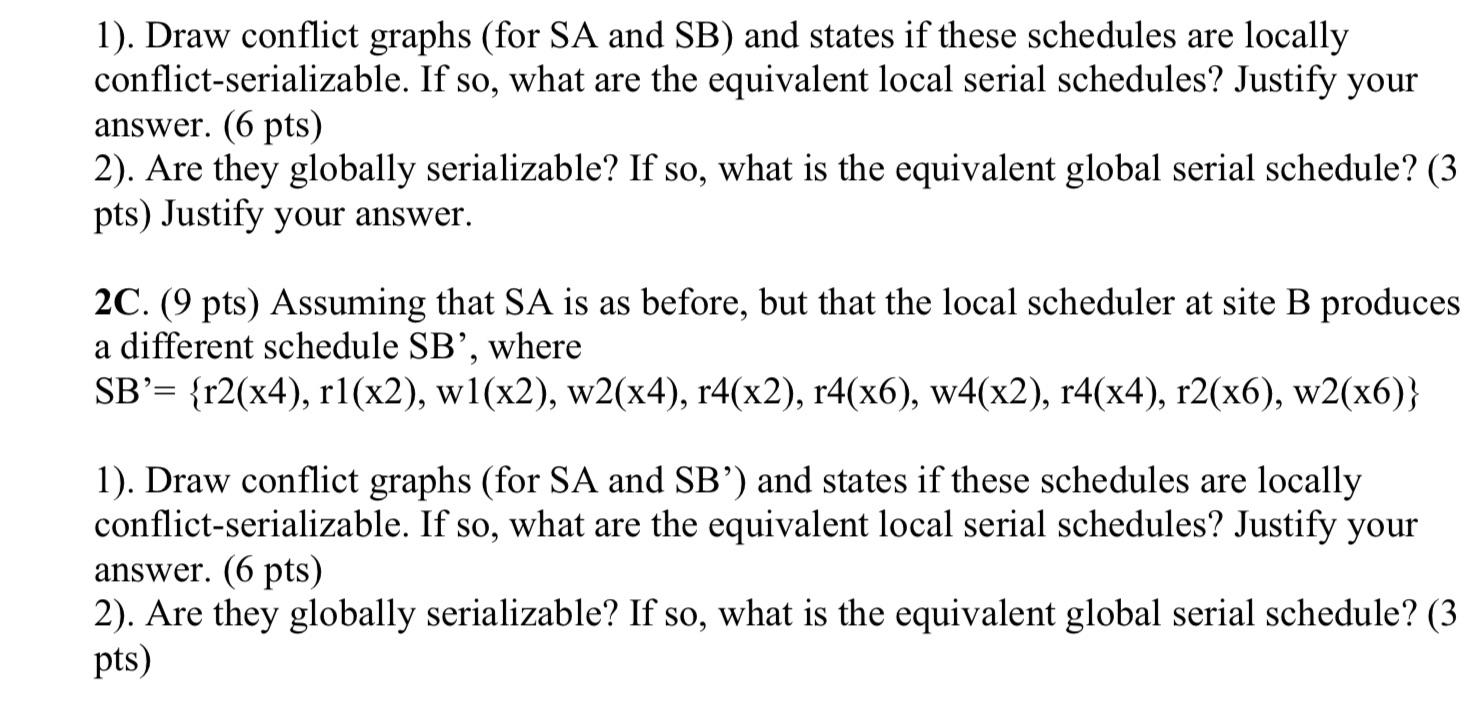Answered step by step
Verified Expert Solution
Question
1 Approved Answer
Two concurrent global transactions, T1 and T2, consist of the following: T1 = {rl (x1), rl (x5), w1(x1), r1(x6), w1(x5), w1(x6), r1(x2), w1(x2)} T2


Two concurrent global transactions, T1 and T2, consist of the following: T1 = {rl (x1), rl (x5), w1(x1), r1(x6), w1(x5), w1(x6), r1(x2), w1(x2)} T2 = {r2(x3), w2(x3), 12(x4), w2(x4), r2(x6), w2(x6)} where ri(xi) and wi(xj) denote a read and a write operation by transaction i on data item xj. Data items x1, x3 and x5 are stored at site A, while x2, x4 and x6 are stored at site B. In addition, two local transactions L3 and L4 consist of the following: L3 = {r3(x1), r3(x5), w3(x1), r3(x3), w3(x5), w3(x3)} at site A L4= {r4(x2), r4(x6), w4(x2), r4(x4)} at site B and they are executed concurrently with T1 and T2. 2A. (2pts) 1). How many serial schedules of these 18 actions are there in T1, T2 and L4? (1 pt) 2). How many possible schedules of these 10 actions are there in L3 and L4? (1 pt) 2B. (9 pts) Suppose that the schedules SA and SB produced by the local schedulers at site A and site B respectively are as follows: SA = {r3(x1), r3(x5), w3(x1), r1(x1), r1(x5), w1(x1), r2(x3), w2(x3), r3(x3), w3(x3)} SB = {r1(x6), r4(x2), r1(x2), w4(x2), r2(x4), w2(x4), r4(x4), r2(x6), w2(x6)}
Step by Step Solution
★★★★★
3.41 Rating (148 Votes )
There are 3 Steps involved in it
Step: 1
4A Given T1 r1x r1z w1x T2 r2z r2y w2y r2u where ri read operation wix write operation xy and v site ...
Get Instant Access to Expert-Tailored Solutions
See step-by-step solutions with expert insights and AI powered tools for academic success
Step: 2

Step: 3

Ace Your Homework with AI
Get the answers you need in no time with our AI-driven, step-by-step assistance
Get Started


